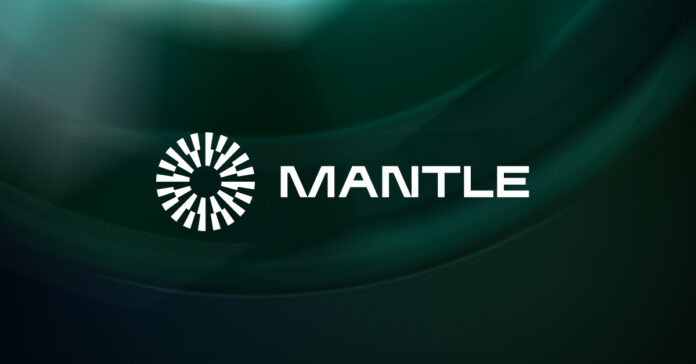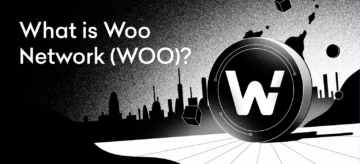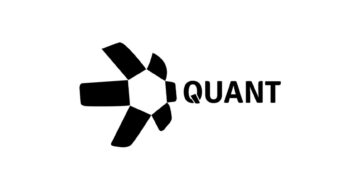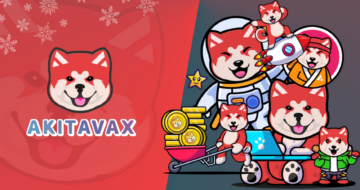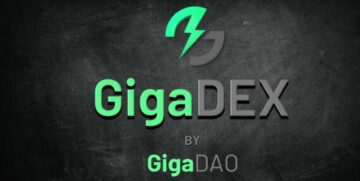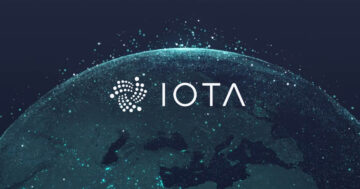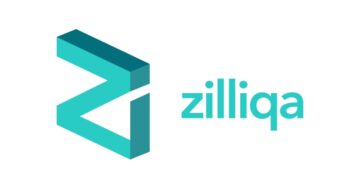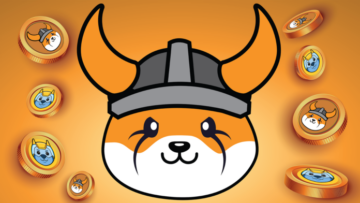In the rapidly evolving landscape of blockchain and decentralized technologies, the emergence of innovative solutions to age-old problems is a hallmark of progress. One such promising entrant in this arena is the Mantle Network, a brainchild designed to scale Ethereum’s capabilities to new heights.
From its transformative inception, backed by significant community and financial support, to its technical prowess offering an array of features, this guide delves deep into the “Ultimate Guide to Mantle Network,” exploring its history, functionalities, and potential.
Background
The Mantle Network emerged from a significant decision made by BitDAO’s governing body. Recognizing Mantle’s potential, the BitDAO community made an impressive move by allocating $200 million from their treasury for the establishment of Mantle’s EcoFund. This massive fund, backed by 100 million USDC, aims not just to financially support but also to strategically mentor projects stemming from the Mantle blockchain.
Key collaborations with stakeholders around the world underline the EcoFund’s vision of cultivating a thriving Mantle developer environment. Its objective transcends mere financial backing; it is a holistic approach encompassing strategic guidance, industry networking, market-entry tactics, and end-to-end project development support.
A pivotal moment occurred in May 2023 when Mantle announced a potential rebranding initiative. Seeking community consensus, BitDAO presented the proposition for a vote. An overwhelming majority, with 235 million $BIT in favor versus a mere 988 $BIT against, approved the change. This decision was rooted in the shared vision of unifying the BitDAO and Mantle brands into a singular entity, represented by the Mantle ($MNT) token. This rebranding exercise also introduced the world to the “Mantle Network” as the moniker for the ecosystem’s rollup component, while BitDAO would be transformed into “Mantle Governance.”
The essence behind the rebranding was twofold: to pave the way for sustained growth for token holders and to bolster community cohesion. Moreover, it underscored the network’s commitment to amplifying core services, like the Mantle Network, without compromising the governance rights or economic advantages of its dedicated token holders.
What is Mantle Network?
The Mantle Network, an offspring of BitDAO community incubation, stands as a layer 2 (L2) solution seamlessly integrated with Ethereum. As an L2 network, Mantle embraces Ethereum’s foundational principles while offering enhanced features and scalability. Its roots are deeply embedded in the BitDAO community, which boasts the distinction of holding the globe’s most substantial treasury, encompassing an awe-inspiring $2.1 billion spread across diverse cryptocurrencies.
Reflecting compatibility with the Ethereum Virtual Machine (EVM), Mantle employs the Optimistic Rollup technology. This places it in line with notable platforms like Optimism and Arbitrum. However, it’s essential to note that as of now, the Mantle Network is in its testnet stage, indicating a pre-launch, experimental phase.
A standout feature of Mantle is its modular network structure. This adaptability means each segment of the network’s framework can be tailored, swapped, or overhauled. Modular blockchain projects, such as Celestia, Fuel, and including Mantle itself, have gained momentum recently. This modular approach is a groundbreaking stride towards addressing the Blockchain Trilemma. In essence, the modularity of Mantle ensures the network can be fine-tuned layer by layer, adapting and evolving to meet its ever-changing requirements.
What is the EigenLayer?
The EigenLayer represents a revolutionary step forward in Ethereum’s staking landscape. At its core, the protocol permits ETH that’s already staked to be committed elsewhere without requiring the unstaking of the original ETH. This dual-purpose mechanism allows users to simultaneously back the security of both the Ethereum blockchain and the DApps that have chosen to harness EigenLayer’s shared security infrastructure.
Delving deeper into its offerings, EigenLayer has introduced another notable product named EigenDA. This product, envisioned as a data availability middleware, was developed and launched atop the Ethereum platform. Its primary function is to serve as a robust data availability layer, aiming to provide both cost-effective and high-bandwidth solutions for the protocols that decide to integrate with it. In the contemporary data landscape, Ethereum currently processes data at a rather modest pace of 80 kilobytes per second. EigenDA, however, promises to remarkably amplify this speed. The project claims an enhancement almost 200-fold, reaching speeds as impressive as 15 megabytes per second. Sreeram Kannan, the brain behind EigenLayer, even envisions the potential of EigenDA catapulting this rate further to an astounding one gigabyte per second in forthcoming iterations.
Yet, Mantle’s integration with EigenLayer doesn’t end at EigenDA. In addition to harnessing the advanced capabilities of EigenDA and drawing from Ethereum’s robust security, Mantle plans to implement a specialized smart contract. This will facilitate staking of the BIT token directly on the chain. This strategic move not only empowers BIT stakers to actively contribute to Mantle’s data availability requisites but also augments the utility and value proposition of the BIT token.
MNT Token
The MNT token, rooted in the ERC-20 standard, emerged as the predominant asset within the Mantle ecosystem post-merger. This transition was realized after a decision to convert the BIT tokens (which were initially BitDAO’s native assets) into MNT at a direct 1:1 conversion ratio. It’s noteworthy, however, that the 3 billion BIT tokens held within the treasury were exempted from this conversion. Instead, Mantle committed to dispatch these unconverted BIT tokens to a designated burn address. To facilitate a smooth transition for BIT token holders, MNT tokens were conveniently airdropped to them on July 17, 2023.
The multi-dimensional nature of MNT is evident in its dual roles as both a governance and utility token. In its governance capacity, MNT offers its holders a democratic platform to voice their opinions on pivotal ecosystem resolutions. Validating its governance potential, MNT holders recently greenlit a proposal which aimed to reduce the MNT treasury reserve from an initial 6.05 billion to a revised 3.05 billion. Moreover, this endorsed proposal confirmed the circulating supply of MNT at 3.17 billion and successfully trimmed down the overall diluted supply from the original 9.2 billion to a leaner 6.2 billion.
Advantages of Mantle
Mantle Network, developed as a technology stack designed to amplify Ethereum’s capabilities, brings a suite of advanced features to the forefront of blockchain tech. Here are the key advantages of Mantle:
- Modularity: Mantle employs a Modular Rollup model. With distinct specialized layers for functions like execution, consensus, and data availability, the system sees reduced gas costs and heightened performance. This structure also aids in conquering the perennial Scalability, Security, and Decentralization trilemma facing blockchains.
- Data Availability with EigenLayer: Mantle and EigenLayer’s collaboration ensures enhanced security and data availability on roll-up architectures. Mantle taps into EigenLayer’s data availability solution, EigenDA, which promotes efficient data storage and transmission, potentially ramping up throughput for cutting-edge web3 applications.
- Strengthened Integrity with Fraud Proofs: Mantle Network’s approach to fraud proofs integrates directly with EVM instructions, enhancing trust across verifiers and clients, and ensuring a fortified network integrity.
- Efficient Transaction Lifecycle: Transactions on Mantle undergo a detailed process, from initiation to finality on Ethereum, ensuring cost-effectiveness. Data Availability nodes, involved in synchronizing and ensuring data accessibility, earn MNT tokens, emphasizing the economic incentives woven into the network’s fabric.
- Bridging Capabilities: Mantle facilitates seamless asset transfers between itself (L2) and Ethereum (L1), ensuring tokens move securely and are universally recognized.
- Smooth Token Conversion: Following Mantle’s rebranding, a well-orchestrated plan ensured BIT tokens were transitioned to MNT tokens. This process was not only systematic but also ensured that governance rights and treasury values were retained.
Conclusion
The Mantle Network’s foray into the world of decentralized tech represents a fusion of innovation, community-driven decisions, and robust technical underpinnings. With its array of advantages, including modular design, enhanced data availability, and rigorous security measures, it stands poised to redefine Ethereum’s future and potentially the broader blockchain ecosystem. As Mantle continues to evolve and expand, stakeholders, from developers to investors, would do well to keep a watchful eye on its trajectory. In an era where scalability, security, and efficiency are paramount, the Mantle Network offers a promising beacon of what the future could hold.
- SEO Powered Content & PR Distribution. Get Amplified Today.
- PlatoData.Network Vertical Generative Ai. Empower Yourself. Access Here.
- PlatoAiStream. Web3 Intelligence. Knowledge Amplified. Access Here.
- PlatoESG. Automotive / EVs, Carbon, CleanTech, Energy, Environment, Solar, Waste Management. Access Here.
- PlatoHealth. Biotech and Clinical Trials Intelligence. Access Here.
- ChartPrime. Elevate your Trading Game with ChartPrime. Access Here.
- BlockOffsets. Modernizing Environmental Offset Ownership. Access Here.
- Source: https://www.asiacryptotoday.com/mantle-network/
- :has
- :is
- :not
- :where
- $UP
- 1
- 100
- 15%
- 17
- 17 billion
- 2023
- 80
- 9
- a
- accessibility
- across
- actively
- adaptability
- addition
- address
- addressing
- advanced
- advantages
- After
- against
- age-old
- aids
- aimed
- Aiming
- aims
- airdropped
- allows
- almost
- already
- also
- amplifying
- an
- and
- announced
- Another
- applications
- approach
- approved
- ARE
- Arena
- around
- Array
- AS
- asia
- Asia Crypto Today
- asset
- Assets
- At
- availability
- back
- backed
- background
- backing
- BE
- beacon
- behind
- between
- Billion
- Bit
- Bitdao
- blockchain
- blockchain ecosystem
- blockchain projects
- blockchains
- boasts
- body
- bolster
- both
- Brain
- brands
- Brings
- broader
- burn
- but
- by
- CAN
- capabilities
- Capacity
- chain
- change
- chosen
- circulating
- claims
- clients
- cohesion
- collaboration
- collaborations
- commitment
- committed
- community
- Community Driven
- compatibility
- component
- compromising
- conclusion
- CONFIRMED
- Consensus
- contemporary
- continues
- contract
- contribute
- Conversion
- convert
- Core
- cost-effective
- Costs
- could
- crypto
- cryptocurrencies
- Currently
- cutting-edge
- DApps
- data
- data storage
- Decentralization
- decentralized
- decide
- decision
- decisions
- dedicated
- deep
- deeper
- democratic
- Design
- designated
- designed
- detailed
- developed
- Developer
- developers
- Development
- diluted
- direct
- directly
- Dispatch
- distinct
- distinction
- diverse
- do
- Doesn’t
- down
- drawing
- each
- earn
- Economic
- ecosystem
- efficiency
- efficient
- elsewhere
- embedded
- Embraces
- emerged
- emergence
- emphasizing
- employs
- empowers
- encompassing
- end
- end-to-end
- enhanced
- enhancing
- ensured
- ensures
- ensuring
- entity
- Environment
- envisions
- Era
- ERC-20
- essence
- essential
- establishment
- ETH
- ethereum
- Ethereum blockchain
- ethereum virtual machine
- Ethereum Virtual Machine (EVM)
- Ethereum's
- Even
- ever-changing
- evident
- EVM
- evolve
- evolving
- execution
- exempted
- Exercise
- Expand
- experimental
- Exploring
- eye
- fabric
- facilitate
- facilitates
- facing
- favor
- Feature
- Features
- finality
- financial
- financially
- following
- For
- Foray
- forefront
- forthcoming
- Forward
- Framework
- fraud
- from
- Fuel
- function
- functionalities
- functions
- fund
- further
- fusion
- future
- gained
- GAS
- governance
- governing
- groundbreaking
- Growth
- guidance
- guide
- harness
- Harnessing
- Have
- heightened
- heights
- Held
- here
- history
- hold
- holders
- holding
- holistic
- However
- HTTPS
- implement
- impressive
- in
- Incentives
- inception
- Including
- INCUBATION
- indicating
- industry
- Infrastructure
- initial
- initially
- Initiative
- Innovation
- innovative
- instead
- instructions
- integrate
- integrated
- Integrates
- integration
- integrity
- into
- introduced
- Investors
- involved
- IT
- iterations
- ITS
- itself
- jpg
- July
- July 17
- just
- Keep
- Key
- l2
- landscape
- launched
- layer
- Layer 2
- layers
- like
- Line
- machine
- made
- Majority
- massive
- max-width
- May..
- means
- measures
- mechanism
- Meet
- mere
- million
- model
- modest
- modular
- moment
- Momentum
- Moreover
- most
- move
- Named
- native
- Nature
- network
- networking
- New
- nodes
- notable
- note
- noteworthy
- now
- objective
- occurred
- of
- offering
- Offerings
- Offers
- on
- ONE
- only
- Opinions
- Optimistic
- or
- original
- overall
- overwhelming
- Pace
- Paramount
- pave
- per
- performance
- permits
- phase
- pivotal
- Places
- plan
- plans
- platform
- Platforms
- plato
- Plato Data Intelligence
- PlatoData
- poised
- potential
- potentially
- presented
- primary
- principles
- problems
- process
- processes
- Product
- Progress
- project
- projects
- promises
- promising
- promotes
- proofs
- proposal
- proposition
- protocol
- protocols
- provide
- prowess
- ramping
- rapidly
- Rate
- rather
- ratio
- reaching
- realized
- rebranding
- recently
- recognized
- recognizing
- redefine
- reduce
- Reduced
- represented
- represents
- Requirements
- Reserve
- revolutionary
- rights
- rigorous
- robust
- roles
- roll-up
- rollup
- roots
- Scalability
- Scale
- seamless
- seamlessly
- Second
- securely
- security
- security measures
- seeking
- sees
- segment
- serve
- Services
- shared
- significant
- simultaneously
- singular
- smart
- smart contract
- smooth
- solution
- Solutions
- specialized
- speed
- speeds
- spread
- stack
- Stage
- Staked
- stakeholders
- stakers
- Staking
- standard
- standout
- stands
- Step
- storage
- Strategic
- Strategically
- stride
- structure
- substantial
- Successfully
- such
- suite
- supply
- support
- sustained
- system
- tactics
- tailored
- Taps
- tech
- Technical
- Technologies
- Technology
- testnet
- that
- The
- The Future
- the security
- the world
- their
- Them
- These
- this
- thriving
- throughput
- to
- today
- token
- token holders
- Tokens
- towards
- trajectory
- transaction
- Transactions
- transcends
- transfers
- transformative
- transformed
- transition
- treasury
- Trust
- undergo
- underline
- underpinnings
- universally
- USDC
- users
- utility
- Utility Token
- validating
- value
- Values
- verifiers
- Versus
- Virtual
- virtual machine
- vision
- Voice
- Vote
- was
- Way..
- Web3
- web3 applications
- WELL
- were
- What
- What is
- when
- which
- while
- will
- with
- within
- without
- world
- would
- zephyrnet

